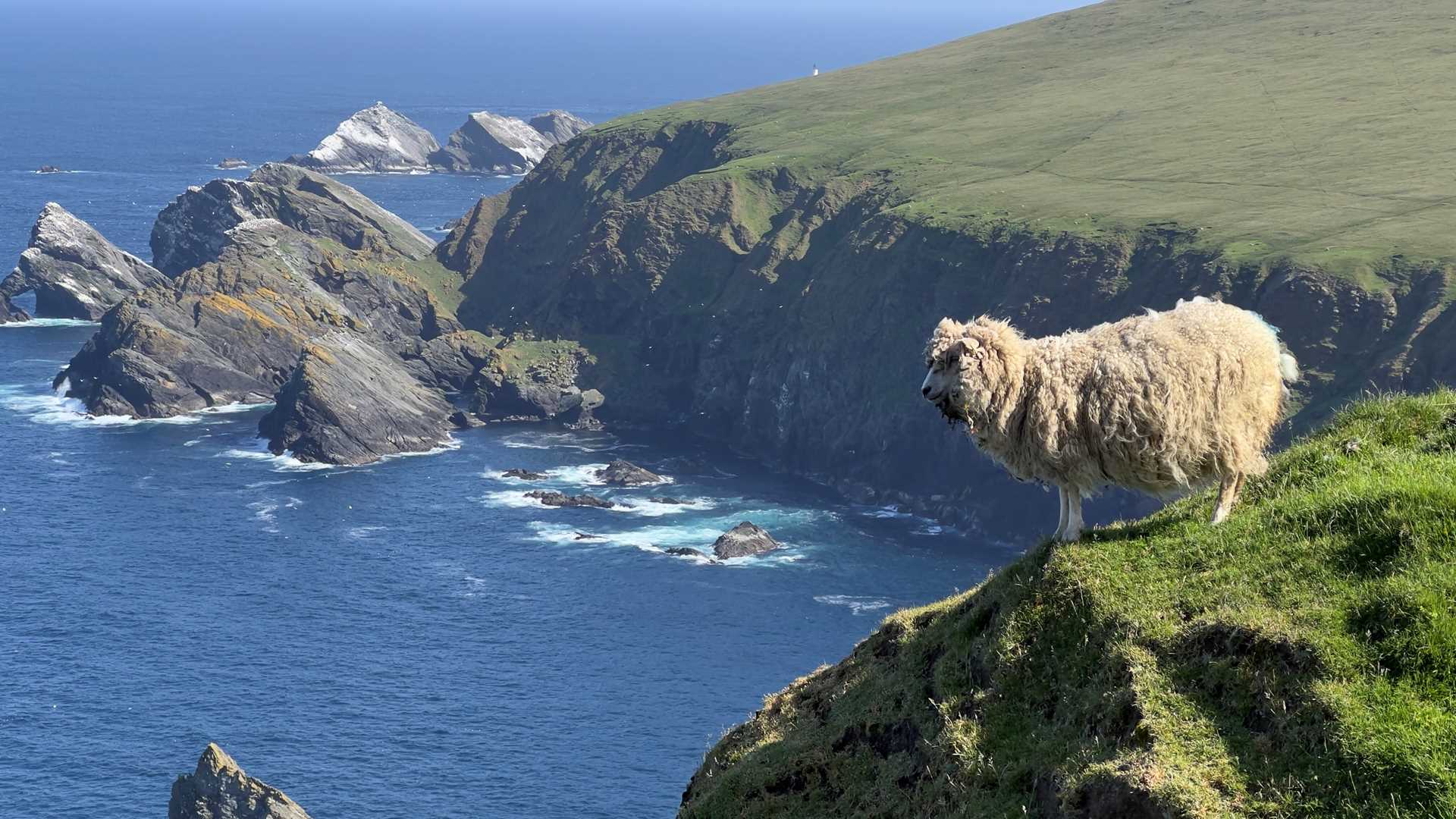This morning, National Geographic Explorer arrived at anchor off the shore of Unst, the third largest of the Shetland Islands and the northernmost inhabited point in the UK. Clouds dispelled to reveal some blue skies as the guests arrived at the dock by Zodiac. Half the group chose to hike to Hermaness Hill at the northernmost tip of the island. Guests encountered spectacular, sweeping views of the landscape, as well as the extensive gannet colony on the cliffs of the Neap. Local sheep also shared in guests’ views of the rugged landscape. The other half of the group embarked on a morning coach tour of some of Unst’s most scenic locations. This offered insight into both the geology and history of the island. The heritage centre and the Boat Haven represent the distinctive lifestyles enjoyed by residents of the island for centuries. A highlight of the tour was a reconstructed Viking longhouse and longboat, which offered a fascinating look back at the Norse heritage of the island. After lunch on board, National Geographic Explorer sailed to Lerwick while guests enjoyed a presentation from the expedition diver. The early evening offered a walking tour and free time in Lerwick, during which guests explored the sights to learn about the history of the city and its Iron Age roots.
5/23/2025
Read
National Geographic Explorer
Aberdeen
Blue skies, a comfortable temperature, and a gentle breeze accompanied guests as they enjoyed visiting the beautiful Aberdeenshire countryside and the city of Aberdeen. As guests disembarked for their morning activities, a lone piper played traditional tunes at the foot of the gangway, a very warm greeting to Aberdeen that further enhanced our overall Scottish experience. While some guests had the opportunity to visit Highland Cattle and Scottish Blackface sheep at a nearby farm, others were able to spend a wonderful morning at either Drum Castle or Crathes Castle. Castle visits included a guided tour of these fortified homes and were followed with independent time, during which guests enjoyed walking through the beautiful gardens and woodlands. For those guests that participated in the city tour of Aberdeen, the sunny conditions highlighted the ornate structures of the Granite City, so named because many of the buildings are constructed of the rock that is found in the hillsides surrounding the city. A glorious morning was enjoyed by all in this remarkable city and its surroundings.







